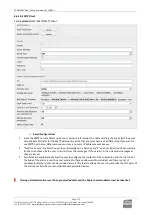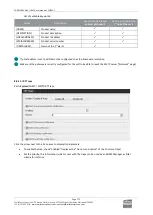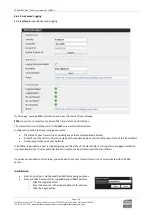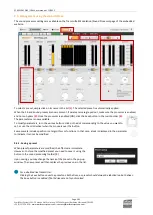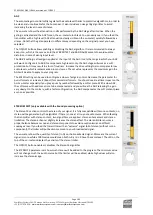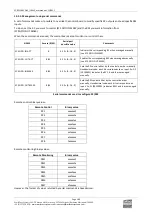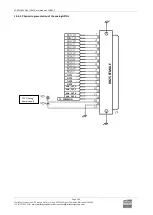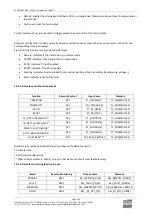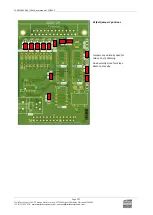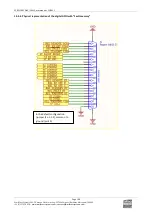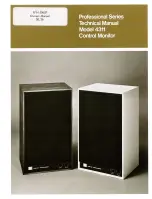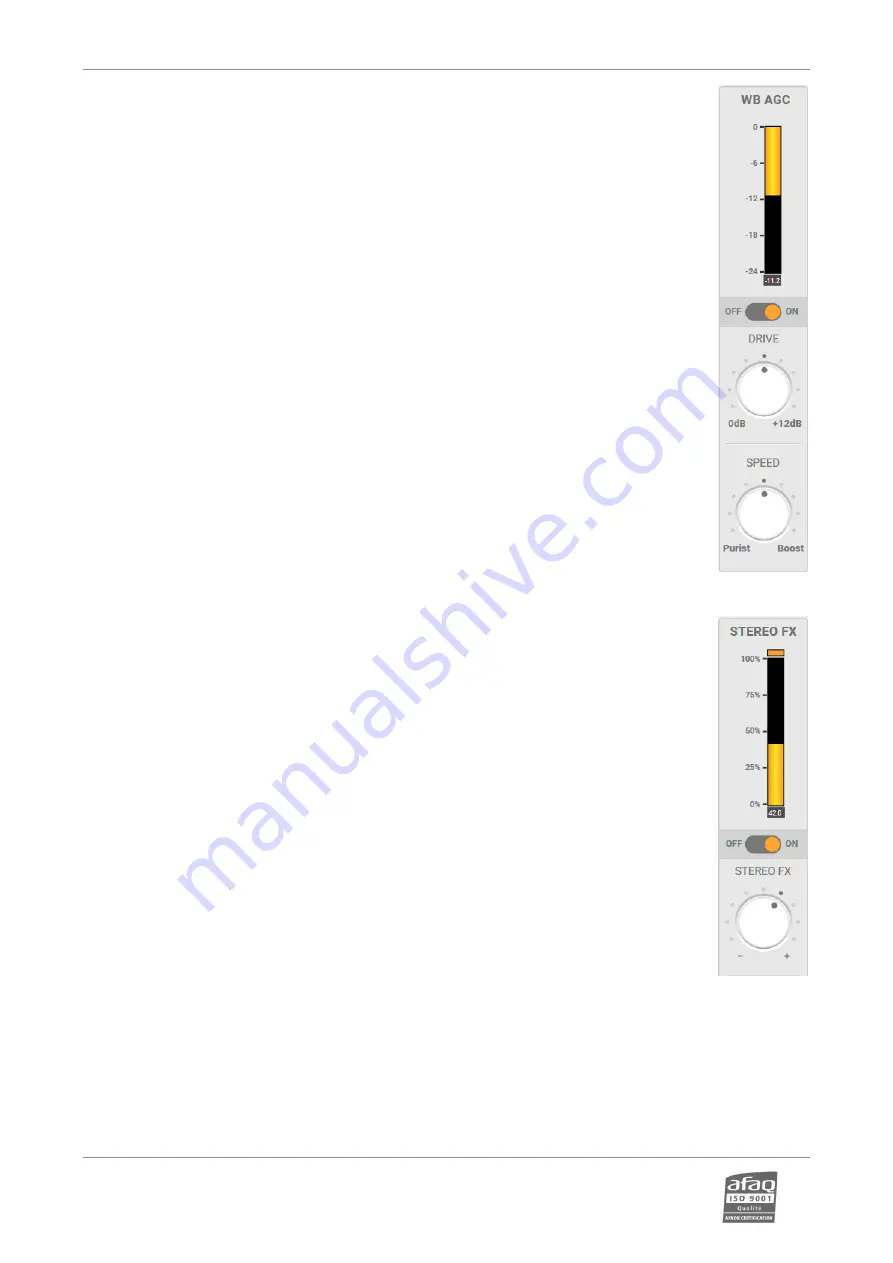
ECRESO FM 5kW / 10kW, user manual
–
11/2021
Page 183
WorldCast Systems SAS - 20 avenue Neil Armstrong - 33700 Mérignac (Bordeaux Métropole) FRANCE
+33 (0)5 57 928 928
–
www.worldcastsystems.com
–
contact@worldcastsystems.com
AGC
The automatic gain control softly regulates the audio level thanks to predictive algorithms, in order to
be clean and unnoticeable for the human ear. It also includes a noise gating algorithm to avoid
increasing the level in case of silence.
The vu-meter shows the attenuation in dBr performed by the AGC stage after its drive. When the
gating is activated and the AGC frozen, the vu-meter turns black. You can easily see it if you feed the
transmitter with a high level (AGC attenuation clearly visible on the vu-meter) quickly followed by a
silence. Note that the gate operates in different ways depending on the original preset you have
selected.
The ON/OFF button allows enabling or disabling the AGC algorithm. It is recommended to always
keep it on, which is the case even in the WB PROTECT and 5B FINALIZE presets to avoid audible
distortion in case of wrong input level.
The DRIVE setting is a fixed gain applied at the input of the AGC. It sets the range in which your AGC
will work. Configure it to 0 dB to compensate high levels only: the AGC stage will work as a soft
protection but it may result in a loss of loudness. Increase the drive setting to also compensate low
audio levels, which is recommended in most cases. The set value represents the maximum gain the
AGC will be able to apply to your program.
The SPEED setting can be used to configure a slow or fast gain control. Decrease the parameter for
purist formats or increase it (Boost) for commercial formats. You should see a real time impact on the
AGC vu-meter especially if you play a punchy number followed by a softer piece. With a slow AGC,
the soft piece will need some time to be compensated and you will see the AGC releasing the gain
very slowly. On the contrary, with a faster configuration, the AGC compensates the soft content piece
as soon as possible.
STEREO EFFECT (only available with the Sound processing option)
The Stereo FX section controls the stereo of your signal. It is fully compatible with mono contents; no
stereo will be generated by the algorithm if there is none at all on your audio source. When feeding
the transmitter with stereo content, two algorithms are applied: stereo enhancement and stereo
limitation. The stereo enhancer slightly increases the stereo effect. The stereo limiter ensures a
proper balance between mono and stereo components to avoid reception issues on difficult
coverage areas. If
you feed the transmitter with an “extreme” signal full of stereo (without mono
component), the limiter will put back some mono to your broadcasted signal.
The vu-meter shows the quantity of stereo (in %) on the broadcasted signal. 0% means the current
signal is mono while a 100% value would mean both L+R and L-R have the same level. The LED on the
top of the vu-meter indicates the activity of the stereo limiter.
The ON/OFF button enables or disables the Stereo FX algorithm.
The STEREO FX parameter sets how much stereo will be added to the program. The minimum value
will not change much the audio source but the limiter will be enabled, while high values will also
increase the stereo image.



